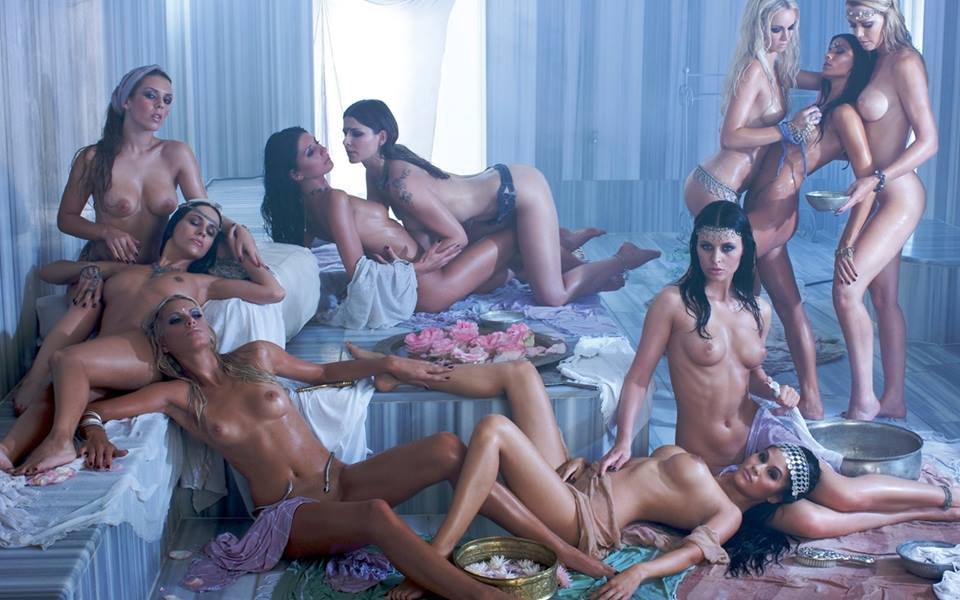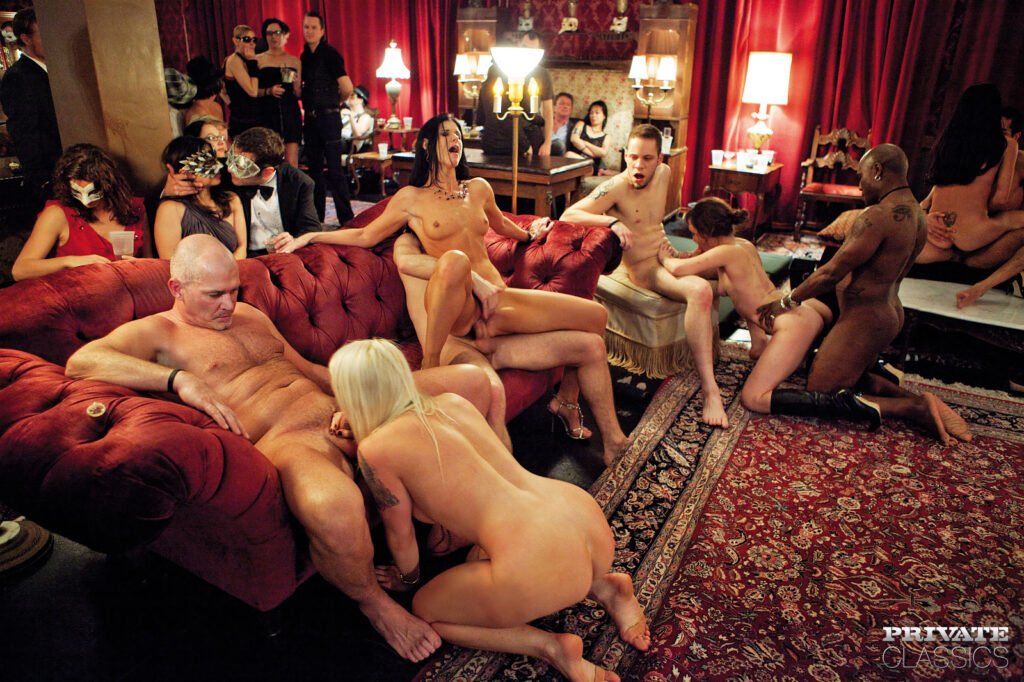Many people think of the rising sexual freedom we’ve experienced, the Tinder hook-up culture, and the crazy college parties we’ve visited as novelties.
Even if we have Pornhub and underground swinger parties, they can’t compare to the ruthlessness and opulence of the people who socialised with the Roman Emperor Caligula.
When looking back to the origins of the orgy, it’s crucial to remember that wild parties have always been in vogue.
Most people do not consider the 16th century to be the pinnacle of orgy culture; however, even in these deeply Christian times dominated by the Church, the orgy found its way into the nightlife of ordinary people, as they crept to hidden locations for candlelit sex parties. Orgies have been around forever. Our unusual fear of orgys is something completely novel.
The Begining
Civilization emerged from the prehistoric, and with it, the ancient Mesopotamian civilizations, starting with Sumer. They took their ancient, orgiastic traditions of sex and fertility with them in the hopes of making a nice life for themselves under the gods and goddesses who were inclined towards wicked behaviour (Ishtar was the Sumerian equivalent of the Roman goddess known as Venus).
Mesopotamian cults engaged in ritualised prostitution and employed temple prostitutes who worshipped the gods by sex and sex alone, making them an early kind of nuns, but quite different from the devout women we know today.
Soon after Sumer crumbled and Akkadia arose, somewhat separate civilizations developed, and Babylon revitalised the sex orgy with its Babylonian Fire Festivals, which included unrestrained sex between vast numbers of people. Ishtar was adored during these yearly fertility celebrations, which have been traced back to the origins of contemporary Easter. Ancient people would sexualize and exercise their religious beliefs in the most sensuous manner possible.
Humans from Egypt’s Past
Sex orgies flourished in ancient Egypt due to the culture’s rigid religious beliefs and morbid preoccupation with death and the afterlife. Some of the craziest orgies in human history took place in the ancient Egyptian city of Bubastis.
The Greek historian Herodotus describes the Bastet festival celebrated there (in honour of the goddess of the same name), noting that participants engaged in “completely uninhibited sex” and a “complimentarily friendly” attitude towards wine use.
It seems that when this festival came around, eating, drinking, and having orgies was the order of the day, since memories of these celebrations still bring to mind scenes of bare, bronzed Egyptian bodies strewn over the landscape with bronze age cups in hand and sex unleashed.
Greece in Antiquity

Greece was no stranger to hedonistic sex, and its city-states created a name for themselves in the ancient world of sex. The ancient Greeks weren’t afraid to express their sexuality or brag about their depravity, as shown by paintings and ceramics that date back thousands of years.
Although Greece has a reputation for homosexuality and paedophilia, the country also had plenty of festivals when people would drink an unnatural quantity of wine and engage in sex orgies in honour of their gods. Like Ishtar, the Greek deity Dionysus (who was also associated with wine and fertility) was given yearly feasts in his honour.
There was widespread wine consumption and nonstop sexual activity during the duration of the celebration.
Throughout the centuries, artists have been inspired by these celebrations, creating works that vividly imagine what it may have been like to attend an ancient Greek orgy.
These affluent civilizations, with their wild celebrations and orgies, were often regarded as the inspiration for the development of Western culture.
Orgies in Ancient Rome

When it comes to orgies, few civilizations in Earth’s history can compare to ancient Rome. The Romans, as they did with everything else, went all out for their orgies, putting on elaborate performances and displaying their incredible riches and festive mood.
Sex practises were adopted into the culture of Rome, which originated as a rural offshoot of the ancient Etruscans, much as Dionysus was changed into the Roman Bacchus.
Bacchus, like Dionysus in Greek mythology, was the Roman god of wine, fertility, festivals, and—yes—orgies. Bacchus was a Romanized version of Dionysus, and celebrations held in his honour were known as Bacchanalia. Modern English still uses the term “bacchanalia” to signify “orgy.” As Rome expanded, so did the Bacchanalia, and soon it was the yearly celebration of drunken group sex that put Dionysus to shame. Originally, this drunken feast was celebrated by women alone.
As the Roman Republic expanded into an Empire, its rulers became more licentious. Two ships were discovered in 1929 and given the name “Lake Nemi ships.” Caligula’s luxurious and impressive ships were a sight to see. It was immediately obvious that these were not regular ships due to the lavish gold and marble interiors. It’s no surprise that Caligula himself would party on one of these ships.
India’s Past
Fancy sex rituals and orgies didn’t originate in the West alone. When opposed to its more libertine past, modern India has a fairly conservative sexual culture. The country that gave the world the Kama Sutra may seem like an indulgent haven of sexual prowess now, and that was indeed the case in the past. Ancient India’s highly sexualized art and culture survives, and it’s reasonable to assume they liked the orgy as much as westerners.
Khajuraho, a city in the Indian state of Madhya Pradesh, is home to one of the best preserved collections of erotic Indian temple art, with a wide variety of sexually suggestive themes, many of which have several participants. Orgies and every kind of sexual activity are shown on the walls of the temple, with groups of entwined individuals engaging in a wide variety of sexually suggestive behaviours. This sex temple has been remarkably well maintained, providing a glimpse into ancient India’s lavish hedonism.
In the time of the Renaissance

Despite their pious writings and demeanour, Middle Easterners enjoyed orgies even as the practise of group sex declined under the scrutiny of the church. Until the Italian Renaissance, that is, when the orgy was given a new lease on life in the form of the masquerade, the poor classes generally didn’t have a social face to save and thus relocated their adventures to places where the wealthy elite didn’t go, which was often, ironically, The Church.
After a night of heavy drinking and raunchy sex, the upper classes would often throw masquerade orgies, during which everyone wears masks to hide their identities. This was done so that they could avoid embarrassment the following day. The masquerades were like the ancient Bacchic orgies, only more intimate and secretive. The following day, everyone had to appear to be upper-class, upstanding Christians, thus keeping the secret was crucial. The masks they designed were elaborate and effective in this pursuit, and the masquerade lives on in today’s Mardi Gras and other similarly inspired parties, which still have strong sexual undertones but lack the robust and sexual nature of the original parties.
This century’s orgy

During the Victorian period, long gowns and covered flesh were the norm so as not to attract the eye (lest ye pull it out if it offends you) or hand of another, leading to a drop in the popularity of masquerades and wild sex in general. The West developed a strong distaste towards sexuality.
At this point in time, only the Rasputins and Aleister Crowleys of the world were allowed to partake in orgies; everyone else had to conform. As the 20th century rolled in, however, the West started to abandon its strict religious beliefs and embrace the emerging secular culture.
One of the first pornographic films, the French production Le Coucher de la Mariee dates back to 1896. Group sex appeared in a number of pornographic works produced in the early 20th century. The orgy was once again on the upswing. Many pornographic recordings from the early 1900s may still be available on the Internet today. These include scenes involving threes, fours, and even more.
The Sexual Revolution as a Countercultural Movement

As the Second World War ended, a new counterculture emerged in the United States in the 1960s, and with it, a sexual revolution. Young people’s rebellion against the Vietnam War manifested itself in an increase in free love and casual drug usage. And the most up-to-date iteration of the mask-less masquerade was the freedom to mingle with complete strangers. Sexual activities, especially when performed in groups, took on a new significance as advocates and organisations worked for their greater liberalisation, and now they are seen as a form of nonviolent protest.
But the Church of Satan was not the only dark undercurrent bubbling under the bright surface of the hippies’ love and peace. Photos from orgies where founder Anton LaVey dressed in robes and religious garb are still available online. Once again, Western society revolted against the conventional puritanism which had held for generations, paving the way for the next generation of orgies to come.
Today’s Sacred Music


There have been more people attending the orgy, crazier activities, and more cameras present since the 1960s. The decade’s drive towards sexual freedom laid the ground for a key event in the United States in the 1970s: the proliferation of swinging. Swinging is when a group of individuals, mostly couples, gather together for a sex-indulgent orgy or other sort of group play, such wife-swapping, but it’s tamer than the great old ships of Caligula. Since then, swinging’s popularity has only grown as pornography has become more mainstream and accepted in mainstream culture.
Technological progress may have been the single most influential factor in shaping the future of the orgy, with pornography serving as a model for sex in large groups of people.
And so it will carry on, as it has since prehistoric times: groups of people of various sizes will continue to join together for sex and orgy, regardless of how far society has progressed in other areas.






